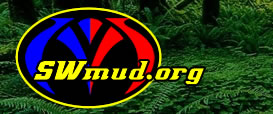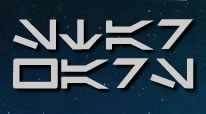 |
 |
 |
||||||||
 |
||||||||||
|
Rules to play SWmud – This site optimized for: |
SWmud Area Coding Guidelines
Before starting to code any new planet for the mud, consider if there were existing planets that could use improving. You can quite easily get approval for adding to older planets. Each planet that we have here should be top quality and many of the current planets could use a little help.
If you are coding an area for SWmud and would eventually like for it to be approved and added to the game, please make sure your area fulfills these requirements:
- First and foremost, the area must follow the SW theme. Make it as realistic as you can. If there are references to your area in the movies, books etc. then follow these references and construct your area according to them.
- Every description must be at least three lines long (each line consisting of approx. 75 characters). This applies for rooms, and any other objects or monsters.
- All descriptions must be unique, unless you have a REALLY good reason to copy one description to several rooms. But it is doubtful any reason is good enough. All rooms must be different, be they parts of a 100 room hallway or 200 room cave.
- There must be item descriptions for every noun mentioned in the room description. And if one of your item descriptions mentions a new thing in the room, you must make an item description for that as well.
These are the minimum requirements all of the code in an area must fulfill. The area will not be added to the mud until then. Additional things that will make any area more interesting to explore:
- Add smells and noises to the rooms; add things Jedi may sense; add things Slicers may slice; etc.
- Add add_actions here and there. They do not have to do anything spectacular, but if a player sees a tree in a room, they might try climbing it, and it would be nicer if they received a better message than just 'What?'. That's just an example.
- Put a few quests in your area. All quests must be thoroughly documented, including all the file names involved in the quest.
- Make some things a little harder to figure out, for example make some exits invisible and refer to them only in the room description. This will not only make reading room descs very useful, but also make exploring more exciting. If a player can find "hidden" things that perhaps no player before has found, they will feel some sense of achievement and will keep coming back to look for more hidden things.
- Put pre_exit_functions here and there, so instead of getting the usual messages about moving around, players would get more interesting messages. For example: As you go north, you almost hit your head in the ledge above...
- Make monsters as interactive as you can. Refer to the catch_tell() function in the building docs. For example, if monsters set_chats include a question "Can you help me?" and the player actually replies to the monster, it would be really great if the monster replied back.
- Make sure your monsters are of many different levels, to ensure everybody something to do. Unless of course your area is designed for only certain levels.
- Most usual areas have these: a shop, a specshop, guild halls, hospital, Cabbie, board, landing dock for ships, bank, possibly ship shop and droid shop etc. You may have all of these or none of these or anything in between. This is more like a reminder list...
- Come up with some new special item that can only be gotten from your area. Try to keep Balancing issues in mind though.
For specific coding syntaxes to get started, please read more on coding areas.
Coder Test || New Coders || General Information Index || Game Information
|
 |
||||||